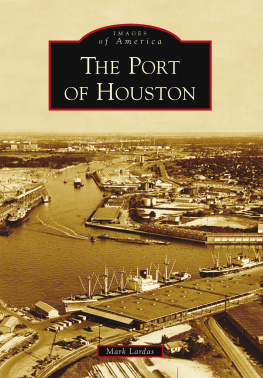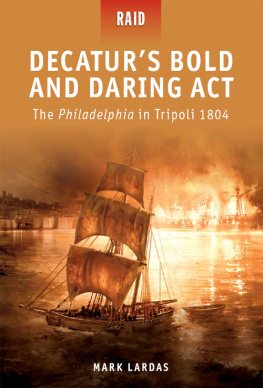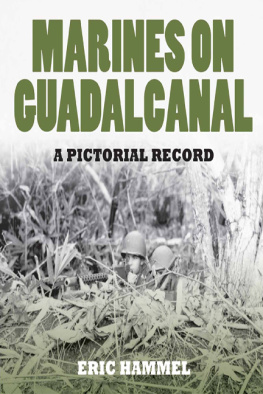
Osprey Publishing
c/o Bloomsbury Publishing Plc
PO Box 883, Oxford, OX1 9PL, UK
Or
c/o Bloomsbury Publishing Inc.
1385 Broadway, 5th Floor, New York, NY 10018, USA
E-mail:
www.ospreypublishing.com
This electronic edition published in 2018 by Bloomsbury Publishing Plc
OSPREY is a trademark of Osprey Publishing Ltd, a division of Bloomsbury Publishing Plc.
First published in Great Britain in 2018
2018 Osprey Publishing Ltd
All rights reserved
You may not copy, distribute, transmit, reproduce or otherwise make available this publication (or any part of it) in any form, or by any means (including without limitation electronic, digital, optical, mechanical, photocopying, printing, recording or otherwise), without the prior written permission of the publisher. Any person who does any unauthorised act in relation to this publication may be liable to criminal prosecution and civil claims for damages.
A CIP catalogue record for this book is available from the British Library.
ISBN: 978-1-4728-2244-4 (PB)
ISBN: 978-1-4728-2245-1 (eBook)
ISBN: 978-1-4728-2243-7 (ePDF)
ISBN: 978-1-4728-2246-8 (XML)
3D diagrams by Adam Tooby
Cartography by bounford.com
3D BEVs by The Black Spot
Artists note
Readers may care to note that the original paintings from which the colour plates in this book were prepared are available for private sale. All reproduction copyright whatsoever is retained by the Publishers. All enquiries should be addressed to:
The Publishers regret that they can enter into no correspondence upon this matter.
: Art Osprey Publishing
Back Cover: Photo courtesy USNHHC
Osprey Publishing supports the Woodland Trust, the UKs leading woodland conservation charity. Between 2014 and 2018 our donations are being spent on their Centenary Woods project in the UK.
To find out more about our authors and books visit www.ospreypublishing.com. Here you will find our full range of publications, as well as exclusive online content, details of forthcoming events and the option to sign up for our newsletters. You can also sign up for Osprey membership, which entitles you to a discount on purchases made through the Osprey site and access to our extensive online image archive.
Authors Note
The following abbreviations indicate the sources of the illustrations used in this volume:
AC Authors Collection
LOC Library of Congress, Washington, DC
USNHHC United States Navy Heritage and History Command
Authors Dedication
I would like to dedicate this book to my good friend, Jim Oberg, and to his uncle, Lieutenant Albert Oberg, who gave his last full measure of devotion aboard the USS Strong in July 1943 in the Solomon Islands during the run up to the events described in this book.
CONTENTS
INTRODUCTION
Simpson Harbor has the finest anchorage in the Southwest Pacific. Set on the eastern end of New Britain, it is a marvelous deep-water harbor, 2 miles wide by 4 miles long, with water depths of 8 fathoms literally a stones throw from the shore. The depth through much of the harbor exceeds 27 fathoms. Simpson Harbor is protected on three sides by volcanic mountains, with the entrance to the harbor emptying into Blanche Bay. Blanche Bays entrance to the ocean lies some 45 degrees from the main axis of Simpson Harbor. This entrance feeds into a channel roughly perpendicular to Blanche Bay, formed by the sheltering ridges of New Britain and New Ireland. The result is an anchorage deep enough for the greatest draft ship ever built, and large enough to accommodate the worlds largest fleet within a sheltered haven.

Simpson Harbor gave Rabaul one of the finest anchorages in the Pacific. Large, deep, and sheltered, it could anchor a fleet, and the largest ship could anchor close to shore. This picture shows Simpson Harbor in early 1943. (USAAF)
Since its creation by a violent volcanic explosion in the seventh century AD, Simpson Harbor was largely overlooked by everyone except those native to New Britain or neighboring islands, such as New Ireland. It came to the attention of the outside world in 1872 when the frigate HMS Blanche, commanded by Captain Cortland Simpson, surveyed the waters around New Britain. Simpson named the harbor for himself and the larger bay for his ship. Twelve years later, in 1884, New Britain, New Ireland, the northern Solomon Islands, and the northeastern quarter of New Guinea were annexed by Germany, becoming German New Guinea. Taking advantage of the magnificent harbor, the Germans built the provinces capital on the north end of Simpson Harbor, naming the town Rabaul.
German rule ended in 1914. After World War I started Australian troops captured Rabaul. Following the wars end the League of Nations mandated control of German New Guinea to Australia. Australia renamed all of the islands, retaining only the German name for the sea north of New Britain. It remained the Bismarck Sea.
Rabaul was still the capital of the Mandate territory, but experienced relatively little growth. The town was in an active volcano zone and minor eruptions were frequent. In 1937, Tavurvur and Vulcan, two volcanoes near Rabaul, exploded, killing over 500 and flattening the town. The territorial capital was moved to Lae, on New Guinea. Volcanoes made the town too dangerous for a territorial governor, but the harbor was simply too good to abandon. Rabaul remained the most important town in New Britain.
Simpson Harbor, despite its excellence, was in the wrong place for Australia to use it much. The port was not on the way to anywhere, on an isolated island far from trade routes. Rabaul would never become a Singapore or a Hong Kong. Between 1918 and 1941 Rabaul remained a backwater; a place for copra planters on New Britain to ship their product to market. Australia committed relatively little to the development or defense of Rabaul. The Australians built an airstrip at Lakunai, on the southeast corner of Rabaul, and a second, larger airstrip at Vunakanau, southwest of Vulcan volcano. Both were primitive airfields with grass runways and hardstands, and no revetments for their aircraft. Communications facilities were built, including a commercial radio station. A constabulary post was established.
On December 7, 1941, with the start of World War II in the Pacific, Rabauls location gained significant strategic importance, especially for the Japanese, as they rampaged across the Pacific. The main Japanese base in the Central Pacific was at Truk, an atoll in the Caroline Islands. Rabaul was within 800 miles of Truk, well within the operational radius of American long-range bombers operating from Rabaul. True, the United States and its Australian allies had no long-range bombers at Rabaul in December 1941. Only ten obsolescent Wirraway fighters, four Hudson bombers, and the incongruously named 1,400-man Lark Force guarded Rabaul. But while Rabaul remained in Allied hands, Truk was threatened.
Rabaul was also within the operational radius of Japanese bombers based at Truk, and only two days steaming for fast transports departing Truk. Japanese aircraft carriers from Truk could reach Rabaul still faster.
Japan soon moved against Rabaul. Truk-based bombers began bombing Rabaul shortly after New Years Day. Two weeks later they were joined by carrier aircraft, starting a week-long campaign which routed the Royal Australian Air Force (RAAF) Wirraways and Hudsons. The Japanese landed on New Britain on January 22, and took Rabaul the next day. Lark Force had been ordered to hold off the Japanese for as long as possible and then run for safety. They slowed the Japanese not an hour and were swallowed whole within a week.














